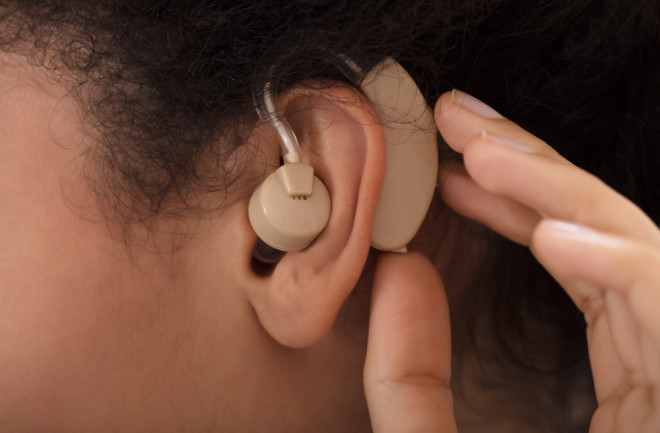For as long as I can remember, hearing has been difficult for me. At age 32, I finally saw an audiologist and received my first pair of hearing aids. They cost $1,800 — each.
I dreaded the day I’d have to buy a new pair. But in 2017, Congress ordered the Federal Drug Administration (FDA) to set rules that would enable FDA-approved hearing aids to be sold over the counter (OTC). While that was in the works, the FDA allowed for some non-approved devices to be sold direct to consumer. In 2021, I bought my second pair online for $600 — total.
Prices are expected to get even better. In late October 2022, the FDA-approved OTC hearing aids finally hit the market. These devices are cheaper than their prescription-only predecessors, and they have the potential to help a lot of people. Data in recent years suggests about 15 percent of U.S. adults report having hearing issues. And while some 30 million people in the U.S. experience hearing loss, only about one-fifth of those who could benefit from a hearing aid seek intervention.
Hearing aids amplify sound and can help with mild hearing loss. But buyers need to beware, there are multiple different types of hearing impairment and not everyone will benefit from OTC hearing aids.
Types of Hearing Loss
The Center for Disease Control and Prevention (CDC) organizes hearing loss into four primary categories. The first, conductive hearing loss, is due to a blockage in the outer or middle ear that stops sounds from getting through. The blockage can be caused by a variety of reasons including an infection, excess earwax or damage to the eardrum. It’s typically treatable through medicine or surgery, but until then, people report missing soft sounds and struggling to hear louder noises.
The second type, sensorineural hearing loss, relates to problems more deeply in the ear. There can be damage or disfunction to the cochlea, canals or auditory nerve that makes it difficult to hear or process sounds. It’s congenital for some people, but acquired for others. Loud noises, for example, from industrial equipment can cause permanent damage.
A person with sensorineural hearing loss can benefit from hearing aids. Some people, however, might be better candidates for surgical intervention, including a cochlear implant.
The third type of hearing loss, mixed, involves issues with both the inner and outer ears. And with the fourth type, auditory neuropathy spectrum disorder, the ear components function normally and sound is heard, but it’s not always understood. Depending on the individual’s processing abilities, OTC hearing aids might not be a help.
Making Sense of Sound
Auditory processing disorder (APD) is a condition in which the nervous system struggles to process sound and language. A person with APD can have troubles with auditory discrimination, which is the ability to distinguish words being spoken. The words “eighty” and “eighteen,” for example, can sound exactly the same to a person with APD.
APD can also mean not being able to prioritize which sound to listen to in a loud environment. Audiologists typically call this the “cocktail party effect” to evoke the idea of a loud gathering where people are talking, glasses are clinking and music is playing. A listener has to tune out the background noise and focus on the person speaking, which some people with APD simply cannot do. APD can also make it difficult for people to recall what was said, or to remember patterns of speech.
Hearing aids can provide some benefit for people with APD, and some models come with microphones that can be worn by a teacher in a classroom setting or a friend sitting across the dinner table. Other hearing aids have Bluetooth technology that allows a user to connect with a television or music player and limit other audio disruptions.
The direct-to-consumer hearing aids that have been available for a few years are mostly amplifiers. So while they can help people with mild hearing loss, they don’t have the filtering capabilities seen in the prescription versions.
These functions might indeed become part of the OTC experience one day. Until then, audiologists and hearing loss advocates recommend that people see an audiologist if they have moderate to severe hearing loss or APD. People who suspect they have an infection or other ear damage should see a physician.
But for those who feel ready to pick up a pair of OTC devices, one advocacy group recommends checking the return policy. It’s not uncommon for hearing aid users to test several pairs before they find the right fit. So keep both the box and the receipt and be mindful of the return limits.

